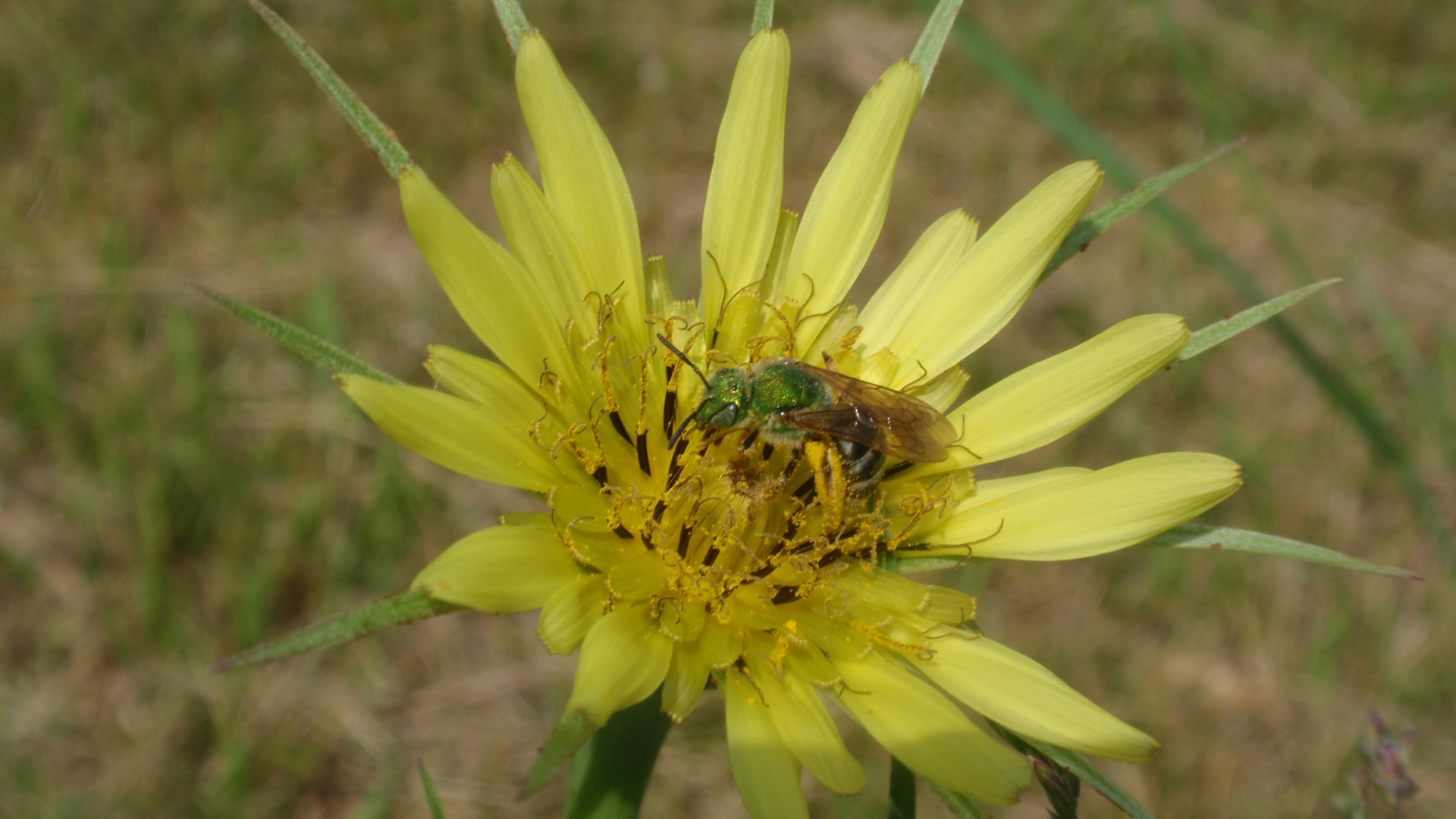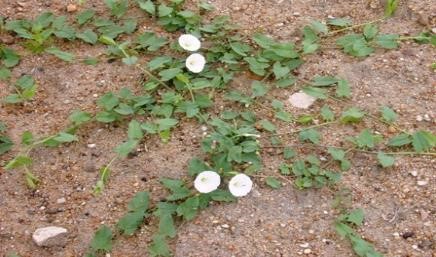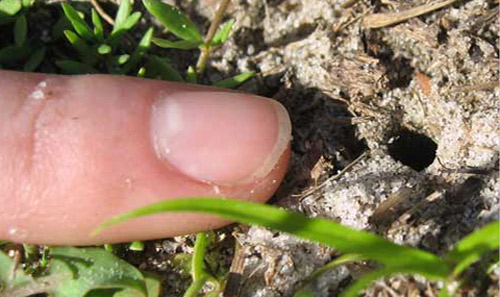Michigan insects in the garden – Week 2: Green bees
Bright green bees are flying under the radar in your garden.

Introducing the green bees
With the upcoming arrival of Pollinator Week, the next insect group Michigan gardeners should know about are the green virescent sweat bees (Photo 1). Eight species of green bees call Michigan home and they belong to the genera Agapostemon, Augochlora, Augochlorella and Augochloropsis. While not all sweat bees are green, this group of insects obtain their name from their tendency to use the salts of human perspiration for nutrition.
Less than a half-inch in size, all species of green bees are solitary except for Augochlorella aurata. One female bee lives in a nest and lays her eggs inside, though multiple nests may be found in the same area. The females of all species are completely green except for the bicolored striped sweat bee (Agapostemon virescens, Photo 2). In some species, the males are smaller and have black and yellow stripes on their abdomens, the rearmost part of the insect. You won’t find the males as frequently, as they sleep in flowers overnight and have fewer hairs on their body, making them less efficient pollinators.

What do green bees do?
These brilliantly colored bees pollinate flowers on plants whose nectar is not deep in the flower. The pollen, which green bees collect and store on special hairs on their legs, is brought to the nest where it is provided as food to its developing offspring.
Green bees are generalist, meaning they visit multiple plant species without a preference. Consequently, there are no special requirements to attract them. Green bees visit native perennials including purple coneflower and black-eyed Susan as frequently as weeds including bindweed and chicory (Photo 3). On the bright side, if flowering weeds appear from the garden, you have an opportunity to profess you are supporting pollinators.

Do I really have green bees in my garden?
Green bees are present throughout the Upper and Lower Peninsulas of Michigan, tolerate disturbance in urban landscapes, and fly in fields of insect-pollinated crops. Multiple studies of urban pollinators regularly note that green bees are present across urban landscapes of the Midwest. Their small size often leads to misidentification as flies, and several features distinguish bees from flies. One is the presence of two pairs of wings on bees. The female green bees also have hairier legs, which they use for pollen collection.
Though pretty to admire, green bees make a difficult subject for the photographer. Green bees are most likely to be spotted on flowers and if approached, they will fly away quickly. Finding their nests is a challenge, as nearly all species dig in soil, preferring slightly hidden areas (Photo 4). One exception is the brilliantly sparking Auguchlora pura, which nests in rotting logs and wood.
Finding a green bee in the garden is not an uncommon event but is sure to bring joy to a gardener in search of a magnificent beneficial insect.




 Print
Print Email
Email





